How to Hide Wood Grain When Painting
Are you painting oak cabinets or furniture? Or other heavy wood grain wood? Here are some quick tips on how to hide wood grain when painting.
Get more painting techniques for furniture here.
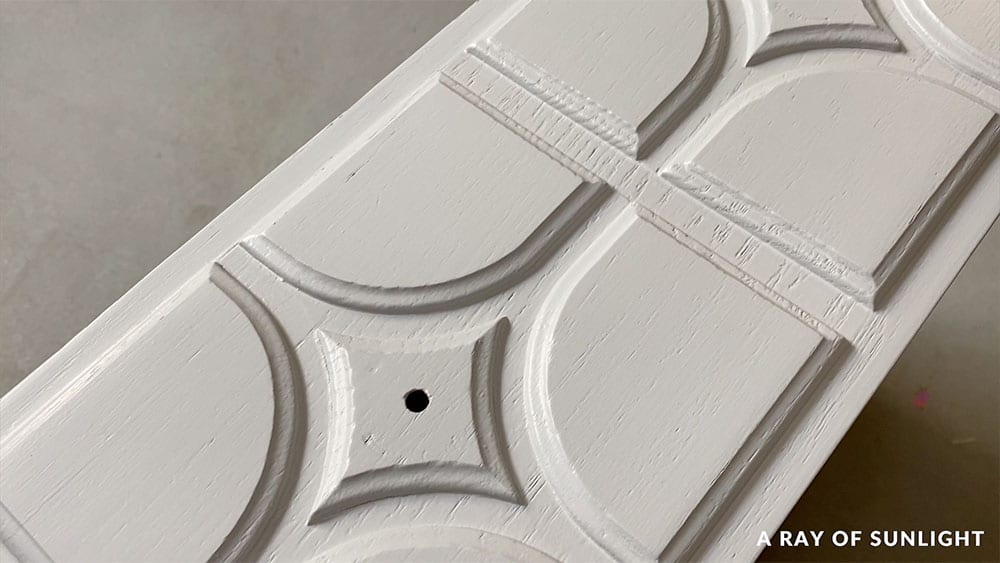
Some types of wood, like oak, have really deep wood grain. So, when you paint it, you can see the pattern of the grain.
This is especially a problem if you’re spraying paint on the wood grain, because it will settle on the top of the wood and not go into the grain.
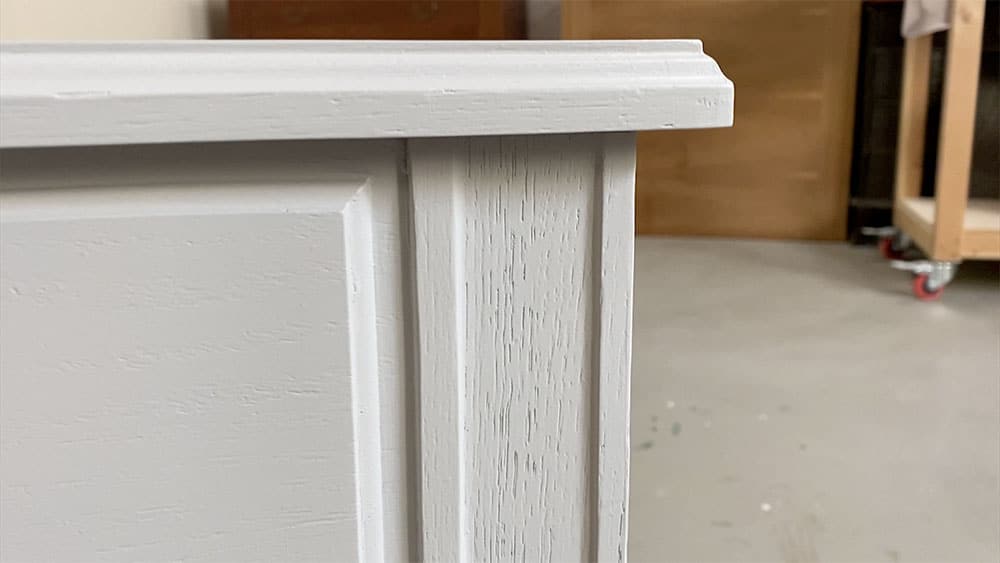
And then it just makes the grain stand out when you’re painting with a light color.
Let’s break down some of the best ways to hide wood grain.
Using a filler of some sort is going to be the best way to fill in wood grain when painting. But I’ll share some extra tips down below as well.
Supplies Used to Hide Wood Grain When Painting
As an Amazon Associate, I earn from qualifying purchases. I also may earn from other qualifying purchases with other companies or get free product to review and use. All opinions are my own.
- Spackling or Wood Grain Filler
- Water
- Extra Container
- Mixing Stick
- Paint Brush
- 220 Grit Sandpaper
- Shellac Based Primer (I used Clear Shellac in a Spray Can)
How to Fill Wood Grain Before (or While) Painting
Before you get any paint out, try filling in the wood grain. I seem to realize that I need to fill in the grain after I have a coat or two of paint on. *face palm*
For an example of me going back to fill wood grain after painting, check out this homemade chalk paint dresser makeover.
It works before or after you have paint on though.
Add Water to the Filler
I like to use regular ole spackling to fill in the wood grain.

Filling wood grain with spackling is a tip that I learned from the genius Dani at JustPaintitByDani. But you can use a wood filler specifically made for filling wood grain too!

So I put some spackling into a separate container, and then I add some water to it. Then I mix up the water and the spackling together, to a consistency that I can brush on.
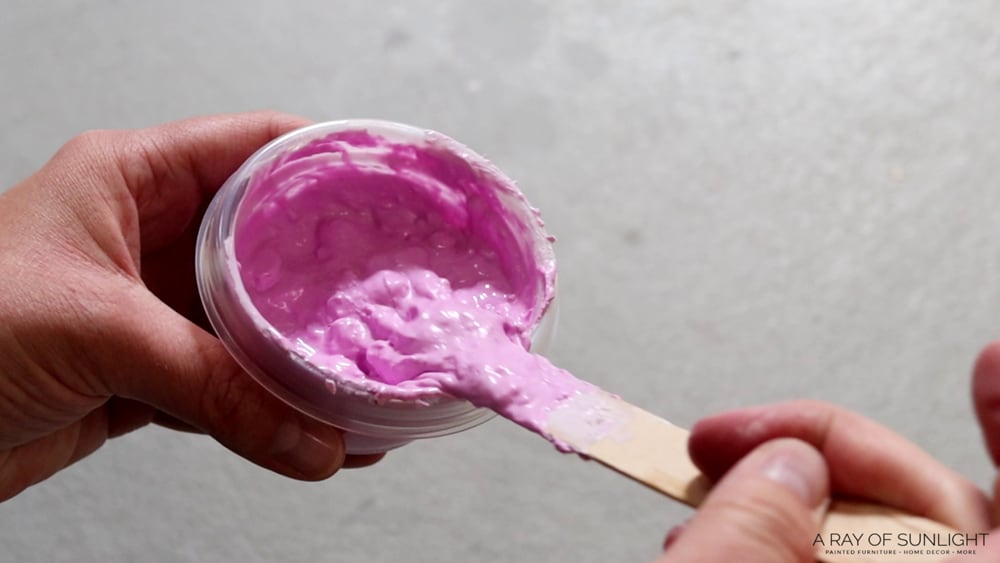
Brush on the Filler into Wood Grain and Let Dry
Then I use a paintbrush to brush the spackling into the wood grain.
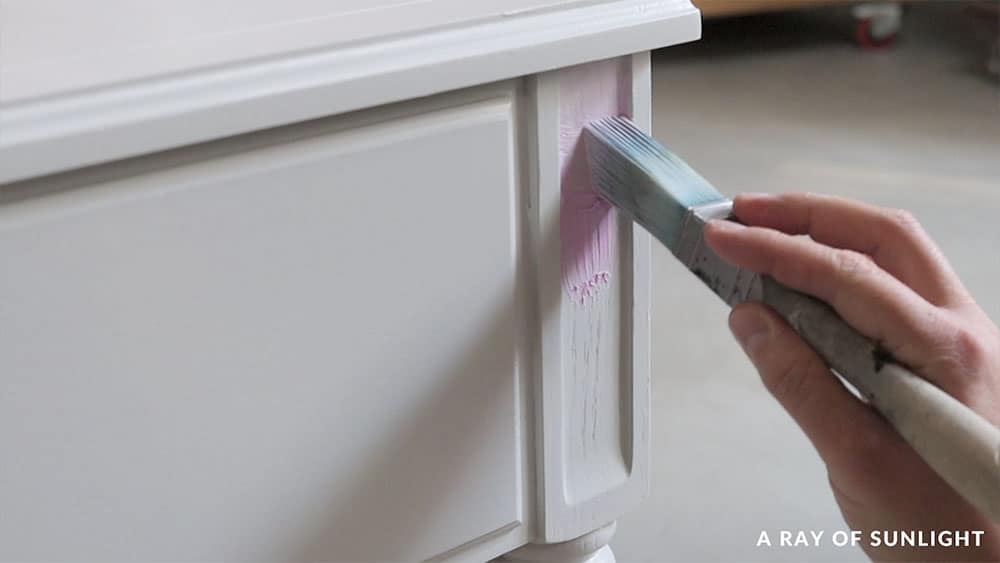
I like to brush it on in the opposite direction of the wood grain so it gets pushed into the wood grain better.
Then I let the spackling dry. This specific kind is pink when it’s wet and turns white when it’s dry.
Sand the Filler Smooth
Once it’s dry I sand it down smooth with 220 grit sandpaper.
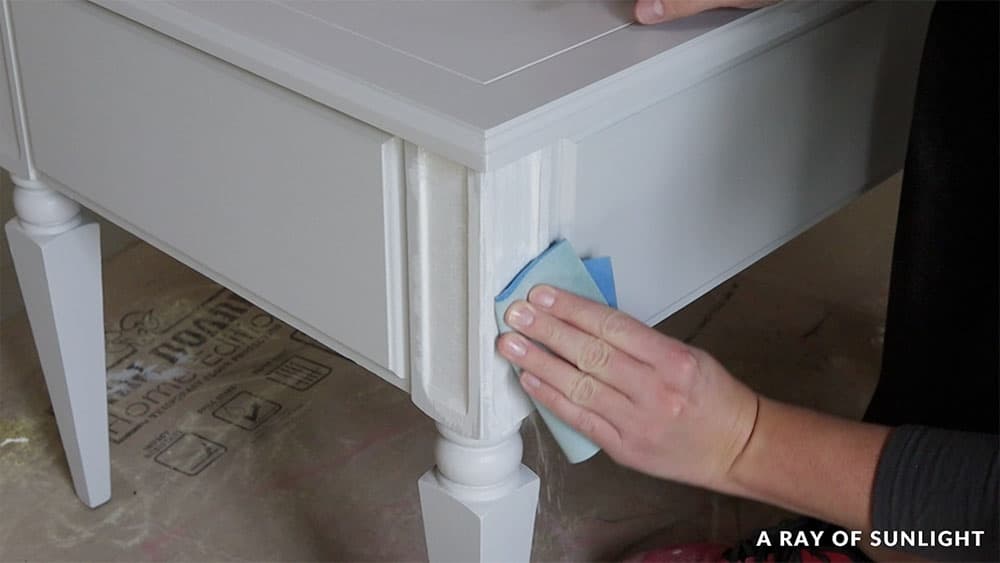
Repeat As Necessary
You can repeat these steps a few times to make sure the wood grain is completely filled in if you don’t want to see any of the wood grain marks at all.
Then I can continue on with my project as normal.
Prime After Filling in Wood Grain
I do personally like to prime it after I fill in the wood grain with a stain-blocking primer because the spackling in the wood grain can bring out bleed-through issues.
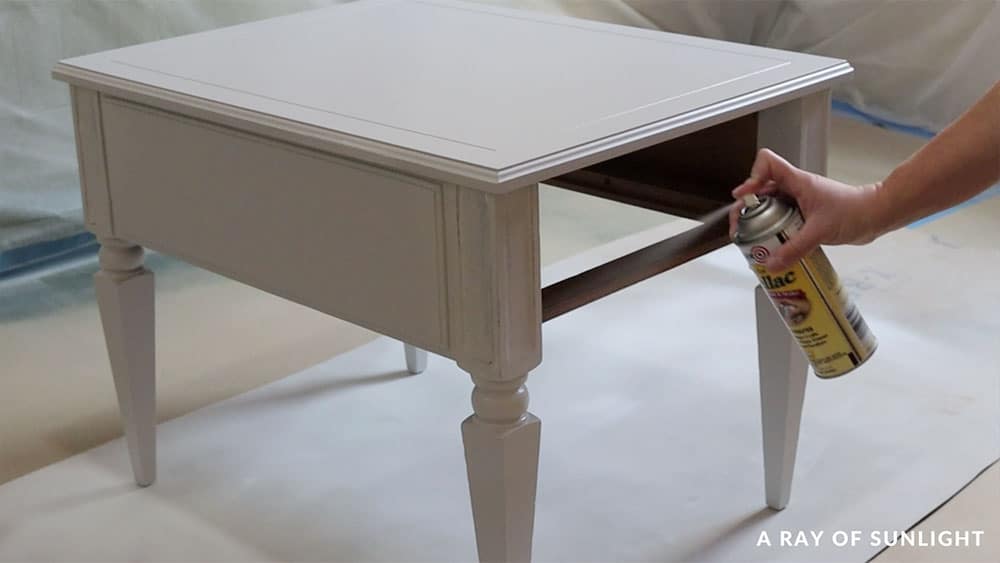
Shellac based primers are always my go-to primers.
Something else to keep in mind too is that if you use a water-based primer, the water can react with the water-based spackling and make it sink a little bit. This will make the wood grain more visible.
But if you use a shellac primer after the spackling, it won’t react with the spackling and make it sink in. This will make the wood grain less visible.
Check out the best primers for furniture here.
Brush or Roll the First Coat of Paint
When it’s time to paint, it’s best to brush or roll the paint or primer on instead of spraying. Check out the best paint brushes for painting furniture and the best rollers for painting furniture here.

When you spray, the paint never gets all the way into the wood grain, so you’re left with black spots where the wood grain isn’t filled in.
If you’re painting with a dark color, it’s not as noticeable, but when you use a light paint color, the wood grain really stands out. Check out my list of the best paint for wood furniture here.

When you brush or roll the paint on, the paint gets pushed into the wood grain, filling the wood grain with paint.
But, after that first coat is on, you can sand down the brush or roller marks if they bother you, and you can spray the paint on for a brush stroke free finish!
Watch the process of filling in wood grain here:
Do One Method or Both Methods
Of course, you don’t have to do both of these things, but if you really want to hide the wood grain, it’s best to do both.
- If you skip filling in the wood grain with spackling, you’ll still be able to see the grain.
- But it will be partially filled in with brushed or rolled on paint, to the point that it doesn’t stand out like a sore thumb.
- If you want to spray the paint on instead of brushing or rolling for the first coat, you can!
- The grain should be all filled in from the spackling, so you won’t see the grain.

More Before And After Makeovers
Click any of these “before” photos below to view the “after” of that makeover.
More Painting Furniture Resources
- How to Strip Paint from Wood Furniture
- How to Paint Over Oil Based Paint
- How to Paint Over Chalk Paint
- How to Paint Wooden Furniture
- Best Way to Paint Furniture
Follow us on YouTube to get more tips for painting furniture.
Or share your project with us on our Facebook Group and be part of our community. See you there!



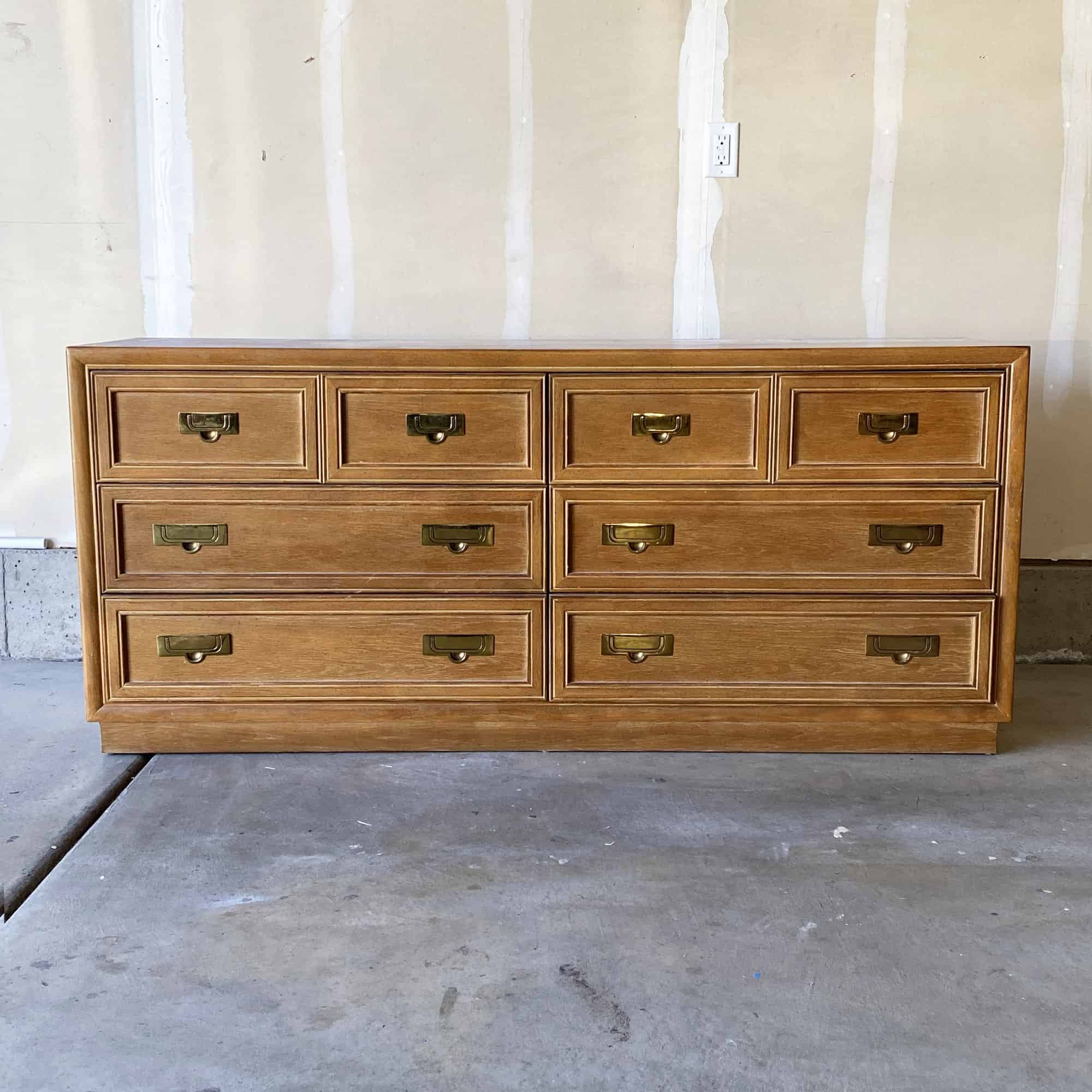
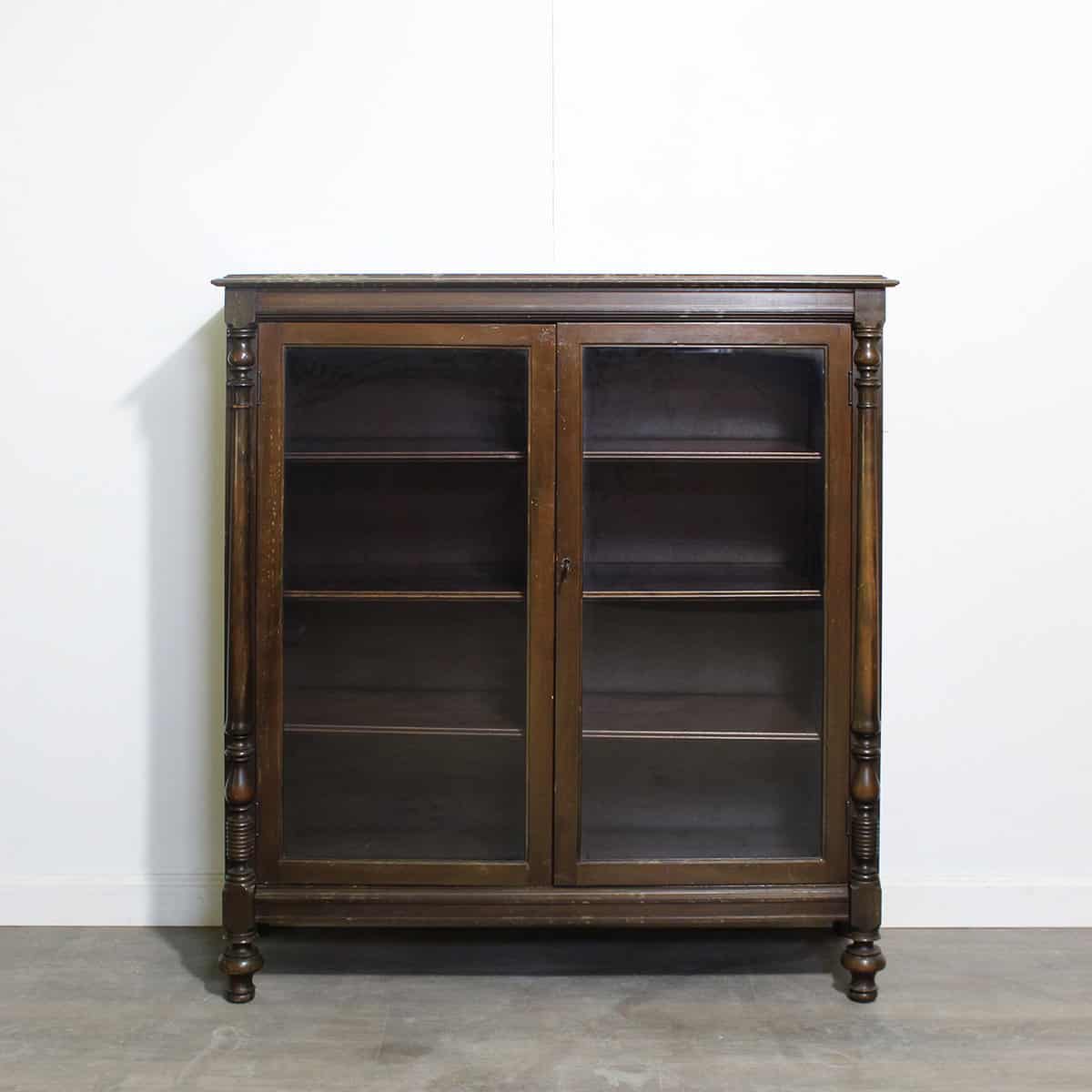
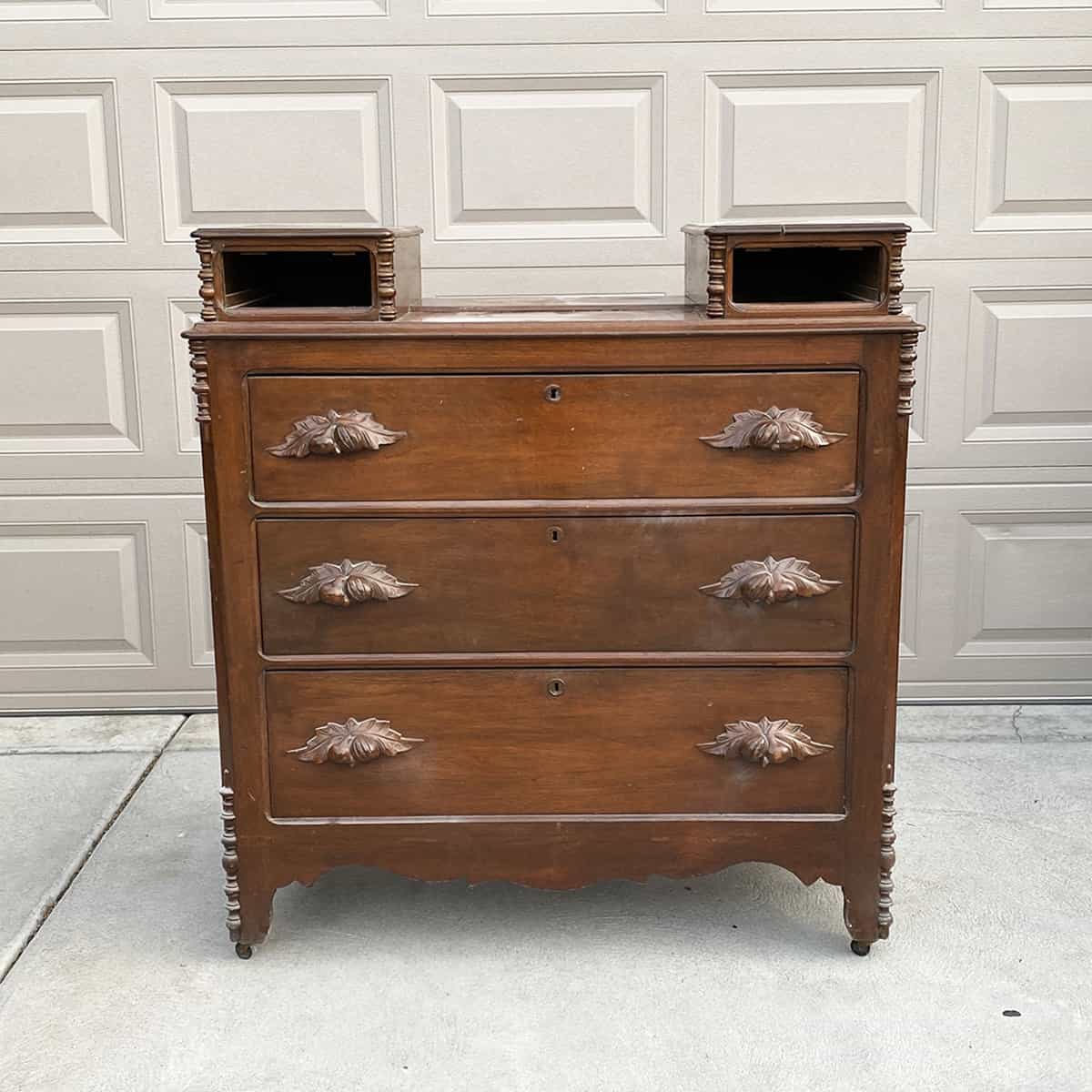
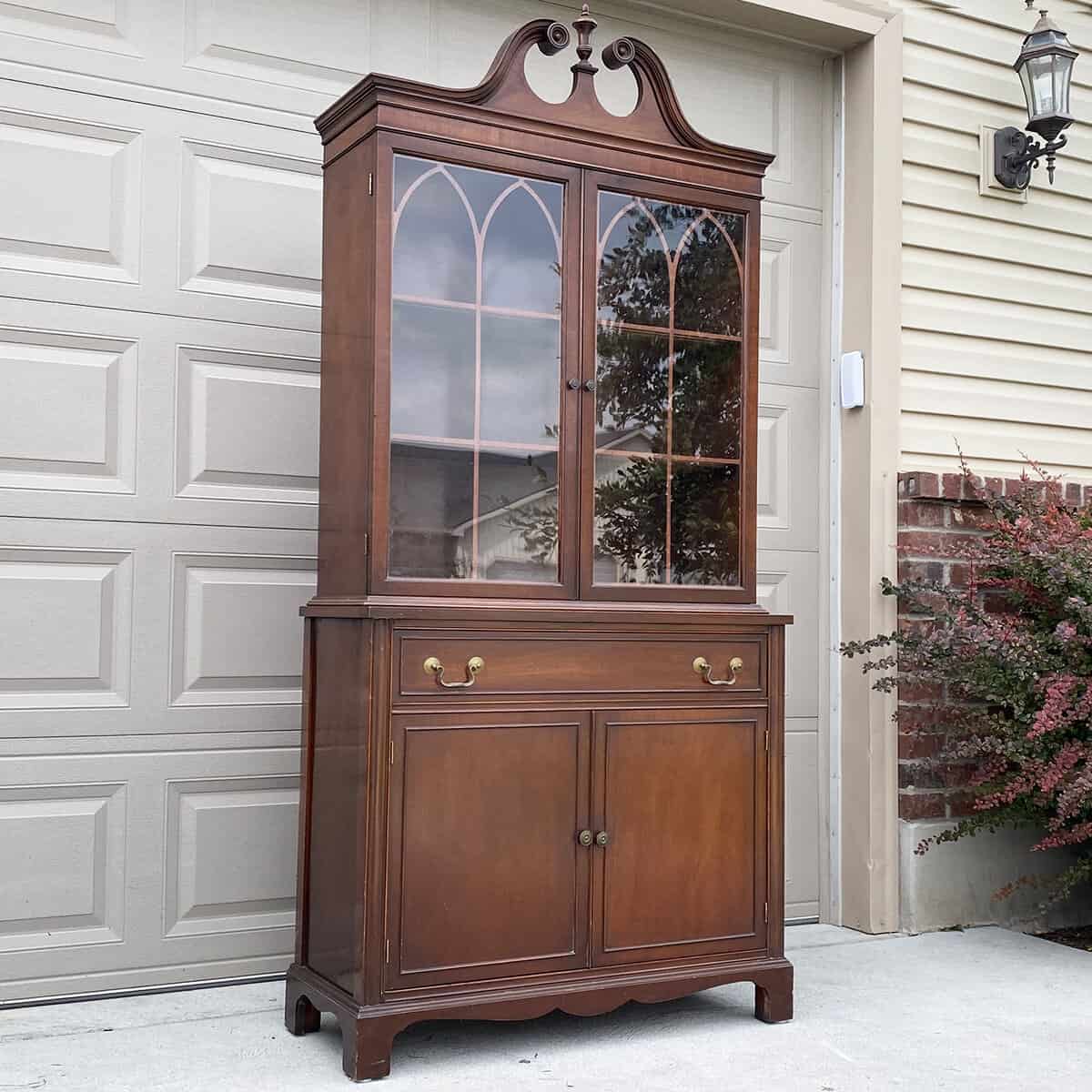
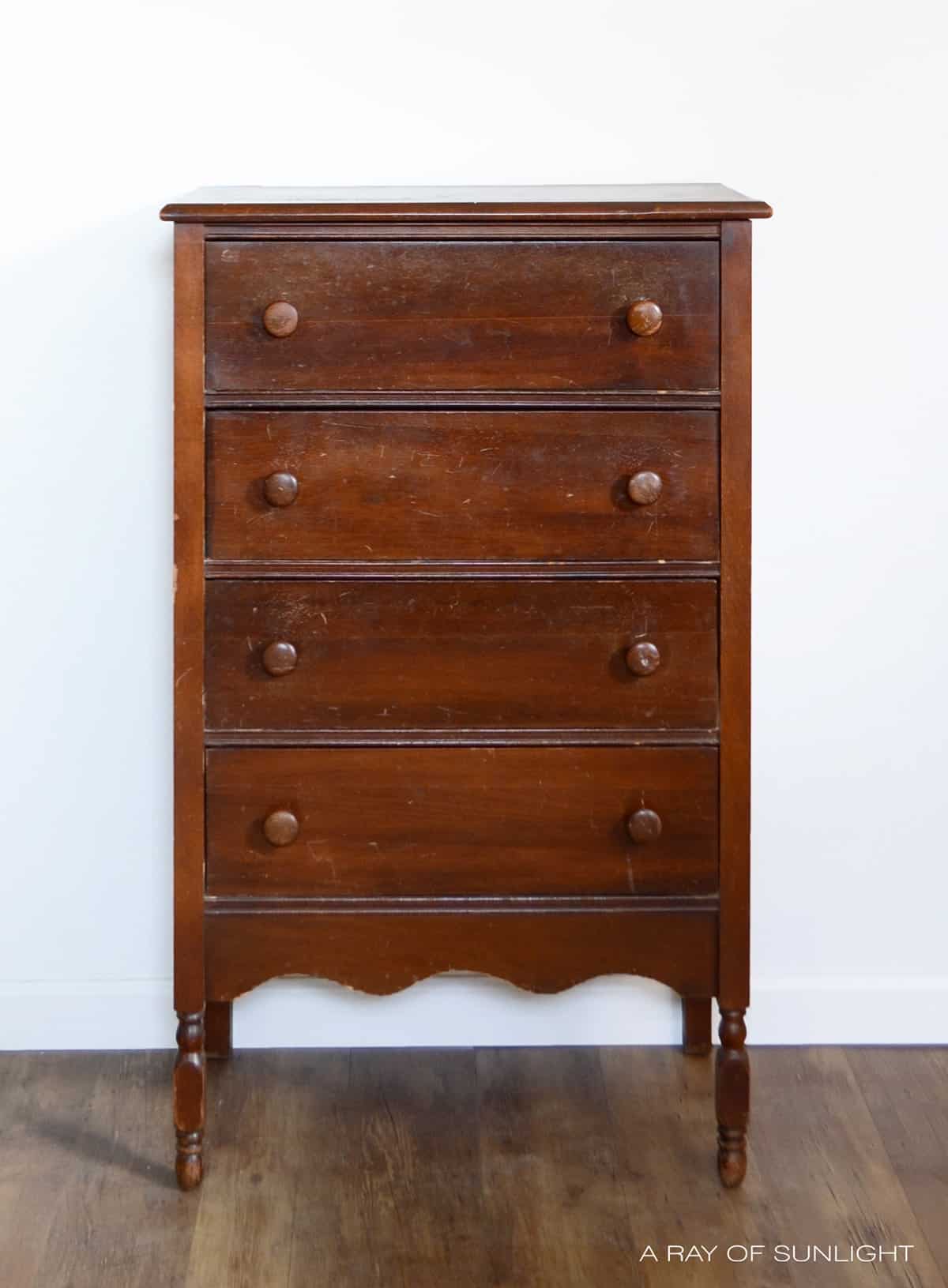

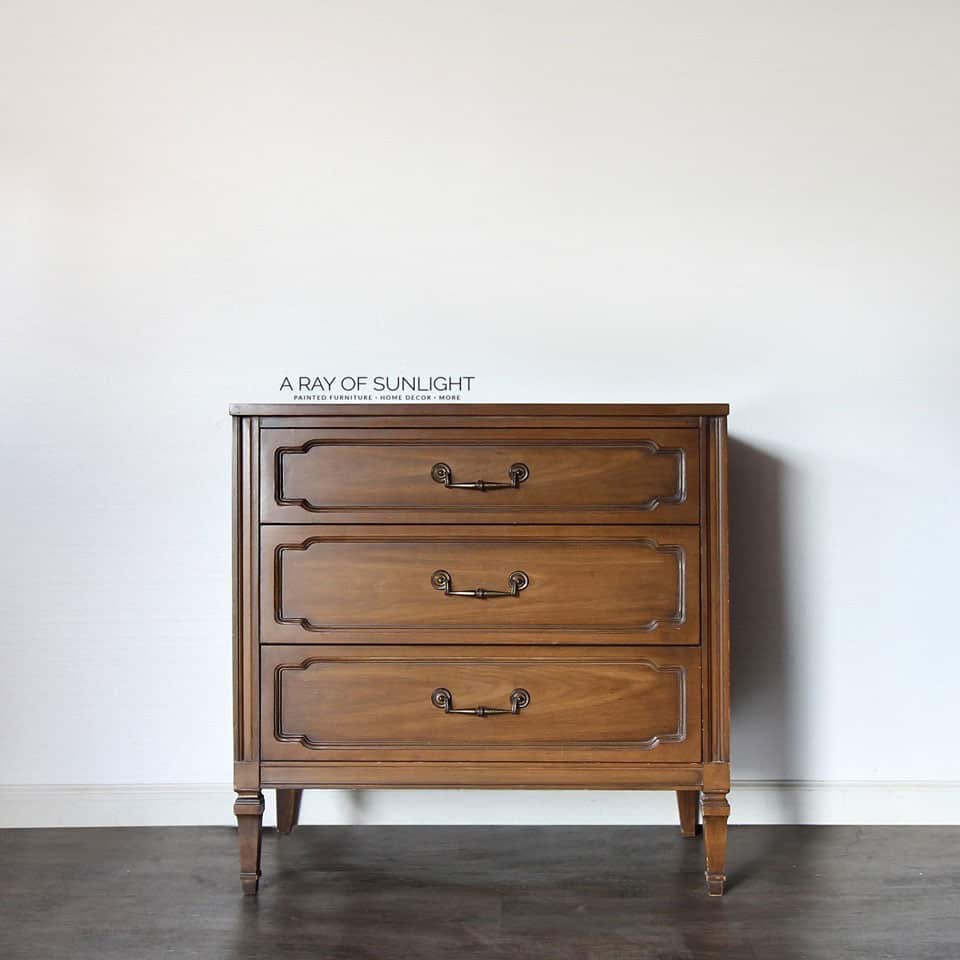
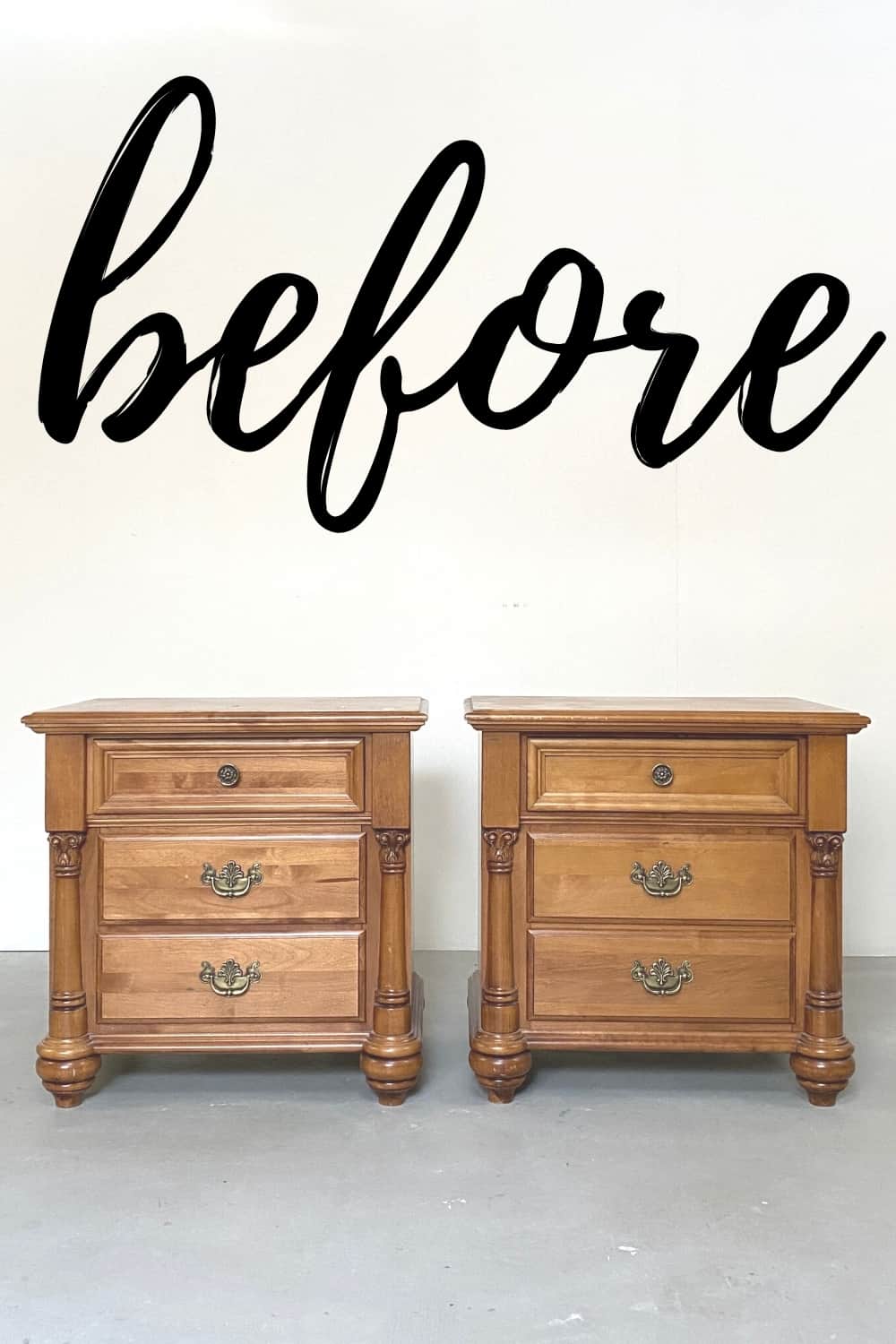
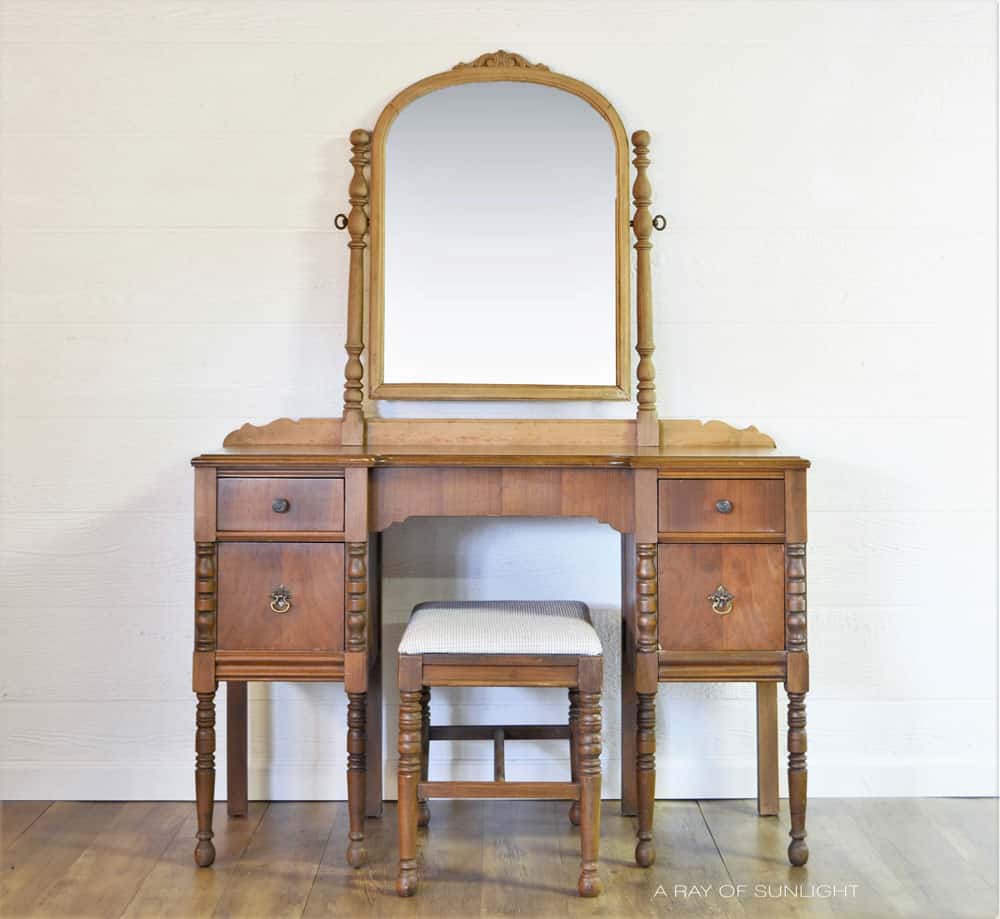
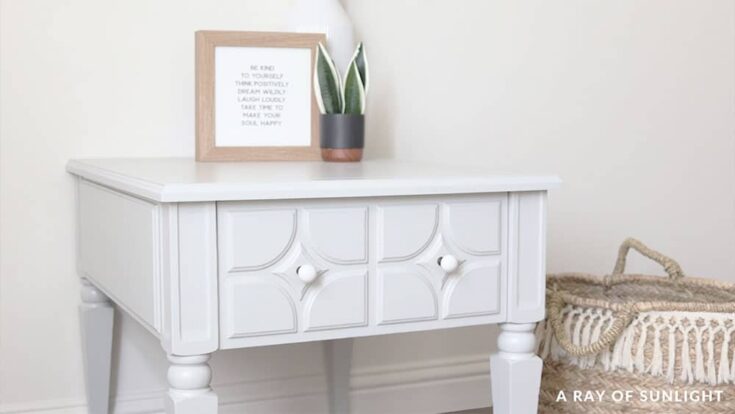



Omg thank you! I have an older lift top coffee table i got and its large and functions great but its not pretty! This will help me give it new life!